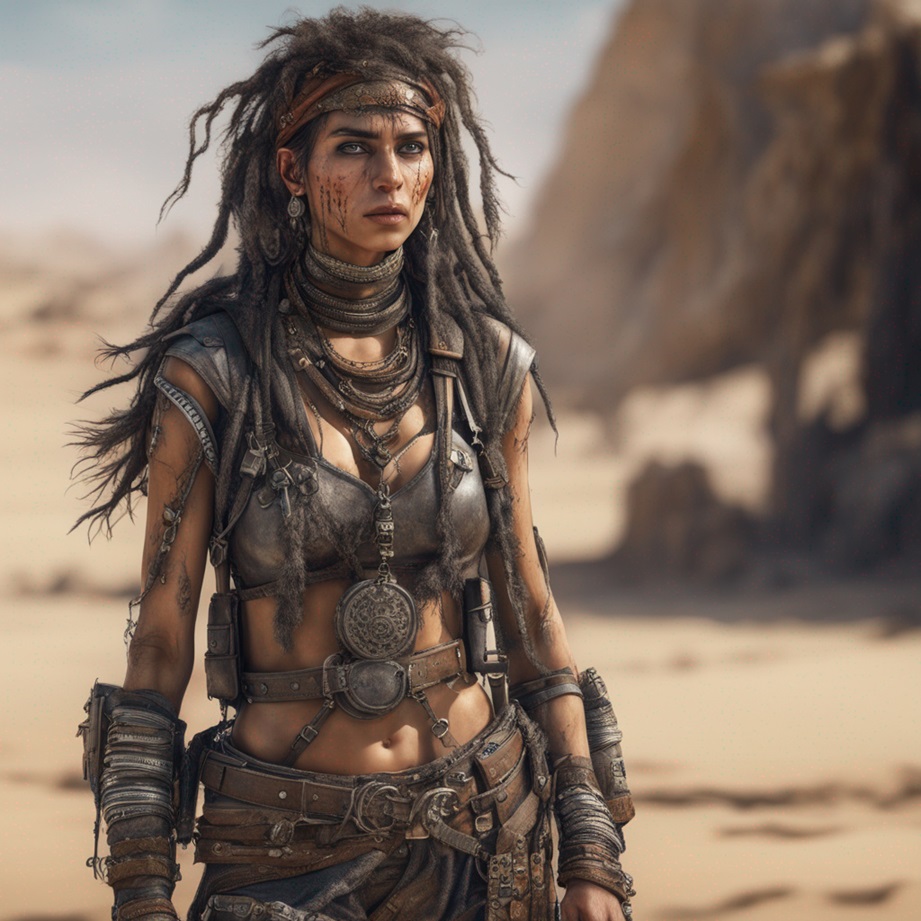Bravery on the Battlefield
AI Generated
4096 × 4096
As Alma lay there, her thoughts drifted back to the events that had unfolded. She had been leading her tribe, defending their land from invaders who sought to claim their resources. The battle had raged on for days, leaving casualties scattered across the sandy terrain. With every swing of her scimitar, she had fought valiantly to protect her people.
But the enemy proved to be relentless, outnumbering her tribe and pushing them further onto the defensive. In the midst of the chaos, Alma had sustained deep wounds, yet she refused to yield. Her spirit burned fiercely, refusing to be extinguished by mere bloodshed.
A soft breeze wafted through the battlefield, carrying with it the scent of desert sand and the distant hum of prayer. The sound brought a faint smile to Aisha's dirt-streaked face. She knew that even in this grim moment, her faith would guide her through. With the remnants of her strength, she closed her eyes and uttered a prayer to the heavens, seeking solace and divine intervention.
In the distance, she heard the sound of shifting sand and the murmur of voices growing nearer. Opening her eyes, she saw a group of her fellow warriors approaching. Relief washed over her, for she knew she would not fight alone. They had come to her aid, their loyalty and camaraderie unwavering.
And as her journey continued, Alma vowed to carry the memory of this battlefield, the blood-stained armor, and the strength of her people with her. For in the face of adversity, she had learned that true beauty lies not only in the art of the world but within the resilience of the human spirit
The Pre-Raphaelites were a group of English painters, poets, and art critics, founded in 1848 by William Holman Hunt, John Everett Millais, Dante Gabriel Rossetti, William Michael Rossetti, James Collinson, Frederic George Stephens and Thomas Woolner who formed a seven-member "Brotherhood" partly modelled on the Nazarene movement. The Brotherhood was only ever a loose association and their principles were shared by other artists of the time, including Ford Madox Brown, Arthur Hughes and Marie Spartali Stillman. Later followers of the principles of the Brotherhood included Edward Burne-Jones, William Morris and John William Waterhouse. More on the Pre-Raphaelite
Alma was by far the most distinguished of women because of her many superior qualities, especially because of the bravery she demonstrated in defense of her people.
Islam elevated the status of women, treating them on an equal footing with a man. Women had a newfound independent identity, in the physical and spiritual spheres.
Islamic history is full of warrior women who fiercely fought for what they believed in, defended what they cherished, and defied all expectations and became legends.
The Warrior Woman is an ancient archetype that is not well known because the stories have been both forgotten and suppressed. Mythology is full of warrior goddesses.
Traditionally, the Bedouin were among the most dangerous of desert tribes, fighting among themselves when outsiders weren’t available. Constantly on the move to find new pastures for their livestock, they learned to live with the minimum of possessions and little external support in the harshest of lands. Loyalty to tribe and family was all that helped a warrior survive. More on Desert Warriors
Please visit my other blogs: Art Collector, Mythology, Marine Art, Portrait of a Lady, The Orientalist, Art of the Nude and The Canals of Venice, Middle East Artists, 365 Saints, 365 Days,
and Biblical Icons,
also visit my Boards on Pinterest and deviantart
Images are copyright of their respective owners, assignees or others.
Some Images may be subject to copyright
I don't own any of these images - credit is always given when due unless
it is unknown to me. if I post your images without your permission, please tell
me.
I do not sell art, art prints, framed posters or reproductions. Ads are
shown only to compensate the hosting expenses.
If you enjoyed this post, please share with friends and family.
Thank you for visiting my blog and also for liking its posts and pages.
Please note that the content of this post primarily consists of articles
available from Wikipedia or other free sources online.




















